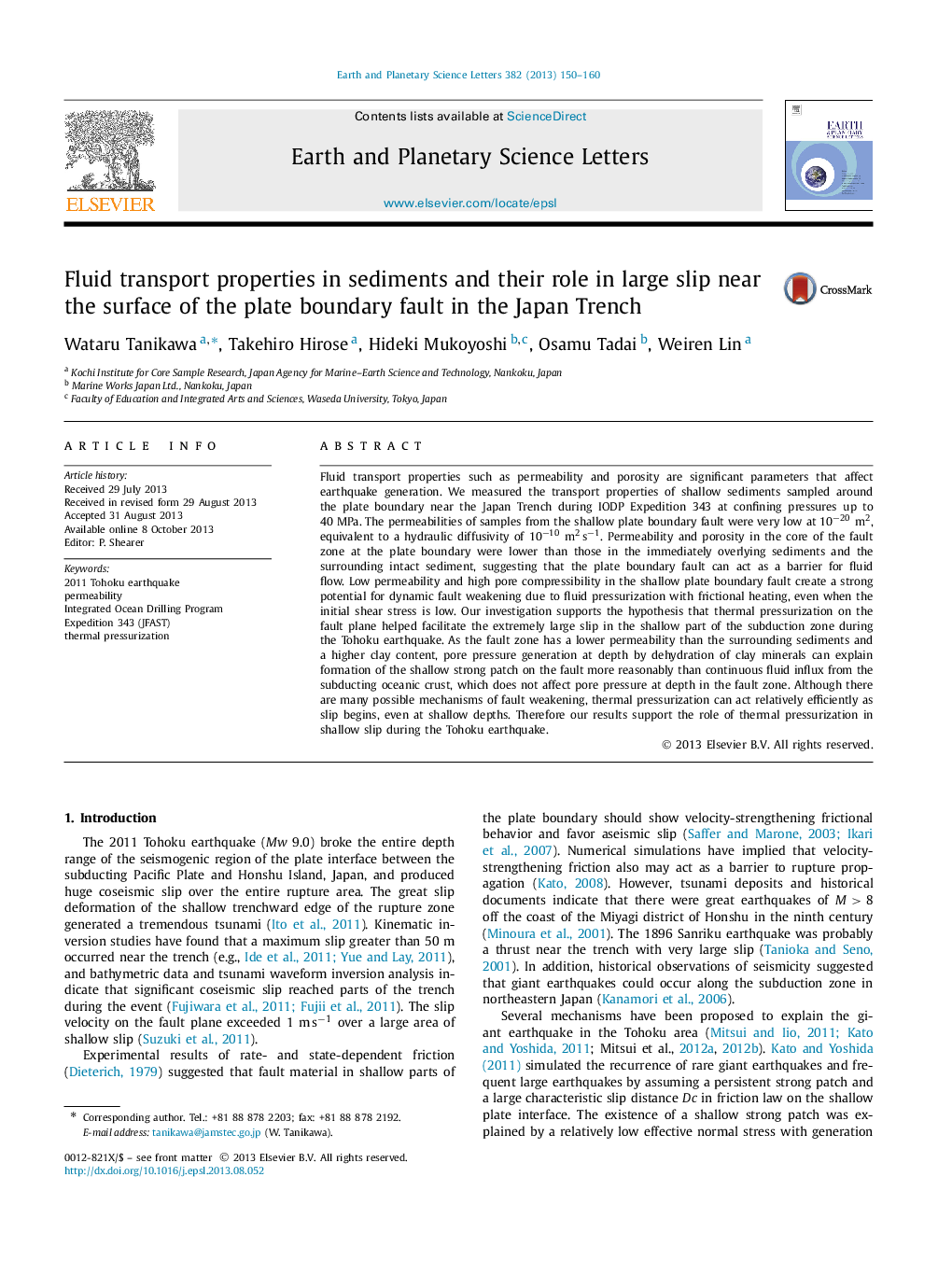| Article ID | Journal | Published Year | Pages | File Type |
|---|---|---|---|---|
| 6429980 | Earth and Planetary Science Letters | 2013 | 11 Pages |
â¢Very low permeability at the shallow portion of the plate boundary fault.â¢Fault zone acts as barrier of fluid flow.â¢Rapid stress drop due to the thermal pressurization by frictional heating.â¢Large slip at the shallow portion is caused by thermal pressurization.
Fluid transport properties such as permeability and porosity are significant parameters that affect earthquake generation. We measured the transport properties of shallow sediments sampled around the plate boundary near the Japan Trench during IODP Expedition 343 at confining pressures up to 40 MPa. The permeabilities of samples from the shallow plate boundary fault were very low at 10â20m2, equivalent to a hydraulic diffusivity of 10â10m2sâ1. Permeability and porosity in the core of the fault zone at the plate boundary were lower than those in the immediately overlying sediments and the surrounding intact sediment, suggesting that the plate boundary fault can act as a barrier for fluid flow. Low permeability and high pore compressibility in the shallow plate boundary fault create a strong potential for dynamic fault weakening due to fluid pressurization with frictional heating, even when the initial shear stress is low. Our investigation supports the hypothesis that thermal pressurization on the fault plane helped facilitate the extremely large slip in the shallow part of the subduction zone during the Tohoku earthquake. As the fault zone has a lower permeability than the surrounding sediments and a higher clay content, pore pressure generation at depth by dehydration of clay minerals can explain formation of the shallow strong patch on the fault more reasonably than continuous fluid influx from the subducting oceanic crust, which does not affect pore pressure at depth in the fault zone. Although there are many possible mechanisms of fault weakening, thermal pressurization can act relatively efficiently as slip begins, even at shallow depths. Therefore our results support the role of thermal pressurization in shallow slip during the Tohoku earthquake.
